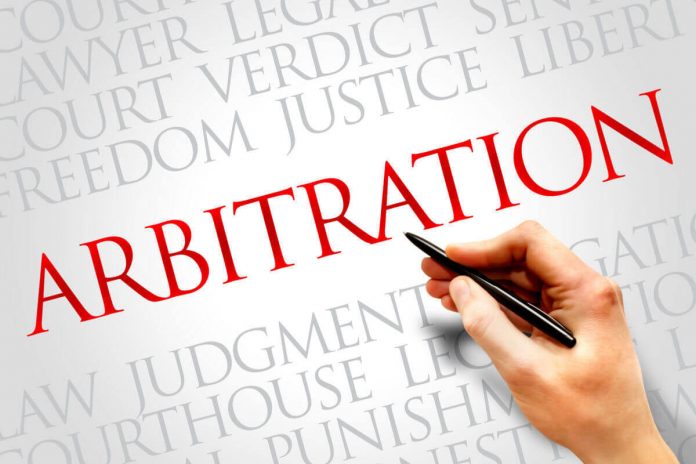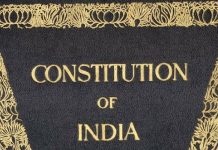This article is written by Vipul Garg, a law graduate and currently working as Vice President at Coinmen Capital Advisors pursuing a Diploma in M&A, Institutional Finance, and Investment Laws. This article has been edited by Ojuswi (Associate Lawsikho).
This article has been published by Sneha Mahawar.
Table of Contents
Introduction
India envisages becoming a 5 trillion dollar economy by 2025. With the growing interest and euphoria around the start-up ecosystem on hand and increasing distress on the balance sheets of Indian companies on other hand, the capacity of enforcing the contracts as well as effective dispute resolution is the key to achieving India’s economic goals. With the increasing clogging of cases in Indian Courts, both the Insolvency and Bankruptcy Code 2016 (IBC) and Arbitration and Conciliation Act 1996 are important mechanisms to resolve disputes.
This article shall first analyse whether any kind of conflict of authority exists between insolvency and arbitration. It will then assess the need for arbitrability during insolvency and then discuss the powers of NCLT in this regard with the help of judicial precedents.
Is there a conflict of authority between insolvency and arbitration
Although both domains have their own merits, there is a key distinction in their respective approaches. The insolvency/ bankruptcy proceedings emphasize more on a centralized approach by bringing all suits against a debtor under one jurisdiction and allowing the creation of third-party rights for all creditors of that debtor to claim their rights. This leads to a system of proceeding in rem whereby the case is against the world at large.
The arbitration proceedings champion the cause of a decentralized approach to dispute resolution whereby the parties have inherent rights of autonomy without inviting any third-party interests. This leads to a system of proceeding in personam whereby the case is only against a particular person.
The Hon’ble Supreme Court in the case of Vidya Drolia & Ors vs. Durga Trading Corporation propounded a fourfold test thus establishing that as soon as a dispute’s matter comes under the purview of a proceeding in rem, then it cannot be taken to arbitration. The provision of moratorium under Section 14 of the IBC also abides by this principle whereby once a case is admitted into the insolvency resolution process, all other suits and proceedings stay. This moratorium also applies to arbitration proceedings.
The reasoning behind this is that dispute resolution can be achieved effectively under one insolvency proceedings by bringing all the stakeholders to one table, rather than expecting a mutual reconciliation between only one creditor and the debtor. However, one needs to dig deep to understand whether despite this there is a need to allow arbitration during an ongoing insolvency proceeding.
Is there a need to give an option of arbitration during insolvency proceedings
The debate was started over the parallel proceedings under arbitration as well as insolvency. Given the avoidance of the maxim ‘justice delayed is justice denied’, this debate revolved around whether by allowing arbitration proceedings during pending insolvency proceedings, the cause of justice shall be delayed or eased?
However, since the facts change and evolve on a case-to-case basis, it cannot be established clearly whether arbitration during a pending insolvency proceeding helps in exacerbating the process or is just being used to delay and frustrate the process of insolvency. The Court has over its various cases given different views and finally, some clarity has emerged over the powers of NCLT to refer the matter to arbitration during insolvency proceedings.
Analysing the powers of NCLT
The National Company Law Tribunal is a quasi-judicial body, which was notified under the aegis of the Companies Act (2013) and deals with disputes between companies of civil nature. Under the IBC 2016 vide Section 60, it has been given the status of adjudicating authority on insolvency resolution and liquidation for corporate persons.
In the wake of encroachment of jurisdiction over any other law, two provisions in the IBC empower the NCLT-
- Section 60(5)(c), empowers the NCLT to entertain or dispose of a petition which contains any question of law about insolvency/liquidation of corporate persons, even if that question may be contrary to any other law which is in force at the time.
- Section 238, states that the provisions of IBC will have an overriding effect on any other law or instrument in force, even if it is inconsistent with IBC.
It can be seen from the provisions that the NCLT has sufficient powers under the IBC to override any other law to do complete justice under an insolvency/liquidation proceeding of a corporate debtor. We can also analyse the Section 8 of the Arbitration and Conciliation Act, 1996 to understand the role of a judicial body in this regard, which states that-
- A judicial authority before which an action is brought in a matter which is the subject of an arbitration agreement shall, if a party so applies not later than when submitting his first statement on the substance of the dispute, refer the parties to the arbitration.
- The application referred to in sub-section (1) shall not be entertained unless it is accompanied by the original arbitration agreement or a duly certified copy thereof.
- Notwithstanding that an application has been made under sub-section (1) and that the issue is pending before the judicial authority, an arbitration may be commenced or continued and an arbitral award made.
Thus, this section can be entertained by NCLT when the subject matter is that of an Arbitration Agreement. To have further clarity over the powers of NCLT, it is important to study and analyse the key judicial precedents on this matter.
Key judicial precedents
Gujarat Urja Vikas v. Amit Gupta & Ors
In this case, the Hon’ble Supreme Court opined that NCLT’s jurisdiction cannot be restrained by Section 14 of IBC, rather Section 60(5)(c) gives it extensive residuary powers. The Court even expressed that any such intervention by NCLT shall not be deemed as any re-writing of the contract between the parties. Since the responsibility of NCLT is to preserve the Corporate Debtor’s survival, it can intervene to disallow any third party to escape the reliefs granted under IBC.
TATA Consultancy Services Limited v. Vishal Ghisulal Jain, Resolution Professional, SK Wheels Private Limited
In this case, the corporate debtor and the appellant were bound under a Facility Agreement. Under this, the corporate debtor had to provide certain services for educational institutions. Clause 11(b) of the Agreement empowered both parties to terminate the agreement, which required an immediate notice and non-compliance of cure by the other party within 30 days of that notice.
The appellant served a termination notice and in response, the corporate debtor applied under Section 60(5)(c), IBC to quash the notice. The NCLT granted an ad-interim stay and the NCLAT upheld the same. However, the Supreme Court stated that NCLT did not have residuary powers here, since the termination of the Facility Agreement was not motivated by the insolvency of the Corporate Debtor.
Indus Biotech Private Limited vs. Kotak India Venture (Offshore) Fund & Ors
In this case, the Hon’ble Court opined that even if applications of arbitration and insolvency are filed together under Section 8 (1996 Act) and Section 7 (IBC) respectively, still the adjudicating authority has a role to play. The Court declared that the authority has to examine and satisfy itself regarding the default and the material placed before it. If the default is established and the debt is payable, then the authority must ensure that the opposing parties do not delay the insolvency proceedings by using the means of arbitration. In this particular case, NCLT held that it wasn’t satisfied that a default had taken place on behalf of the Corporate Debtor. Thus, NCLT referred the matter to arbitration under Section 8.
Swiss Ribbons vs. Union of India
In this case, the Hon’ble Supreme Court was interpreting the constitutionality of withdrawal provisions under Section 12A of IBC. It held that a mere application towards insolvency does not automatically imply that the proceeding has become a proceeding in rem, rather the Court held that the party must be allowed to withdraw/settle the case vide Rule 11 of NCLT Rules, 2016. It stated that until the committee of creditors has been constituted, the proceedings remain in personam. Thus, NCLT should focus only on the applicability of the insolvency petition based on the characteristics of the default claimed. If the default cannot be construed, then the parties can avail Arbitration route.
Harish P. vs. Chemizol Additives Pvt. Ltd.
In this case, the NCLT Bengaluru was dealing with a petition filed under Section of the IBC. There was an Arbitration provision available to the parties under their contract. The NCLT using its powers under Section 442 of the Companies Act, 2013, therefore suo moto referred the parties to Arbitration.
However, the apex Court held the action of NCLT to be erroneous, because Section 442 empowers the ‘Tribunal’ under the Companies Act for such an action. Whereas the NCLT is not a tribunal, rather it is an ‘Adjudicating Authority’. The Court also referred to Innoventive Case to establish that the NCLT under Section 442 cannot refer the parties to arbitration or mediation for the proceedings pending under the Code.
Conclusion
It is still not clear on the classification of insolvency matters, one which can be taken to arbitration and others which cannot be taken to arbitration. However, there is sufficient clarity over the procedure which has to be followed. It can be established that until and unless the NCLT does not ascertain and establish the default of the debtor, it is under no obligation to proceed with the insolvency proceedings since it still hasn’t become an in-rem proceeding. However, once the default is established, the NCLT does not have the power to refer parties to Arbitration, since it becomes an in-rem insolvency proceeding.
References
- https://ksandk.com/arbitration/arbitration-in-insolvency-proceedings/
- https://www.scconline.com/blog/post/2021/12/04/can-nclt-entertain-an-arbitrable-dispute-sc-sets-the-yardsticks-of-residuary-powers-of-nclt-under-ibc/
- https://www.barandbench.com/columns/adjudicating-authority-under-the-insolvency-bankruptcy-code-does-not-have-jurisdiction-to-refer-parties-to-arbitration
- https://www.ibanet.org/arb-insol-india
Students of Lawsikho courses regularly produce writing assignments and work on practical exercises as a part of their coursework and develop themselves in real-life practical skills.
LawSikho has created a telegram group for exchanging legal knowledge, referrals, and various opportunities. You can click on this link and join:
Follow us on Instagram and subscribe to our YouTube channel for more amazing legal content.
 Serato DJ Crack 2025Serato DJ PRO Crack
Serato DJ Crack 2025Serato DJ PRO Crack










 Allow notifications
Allow notifications



